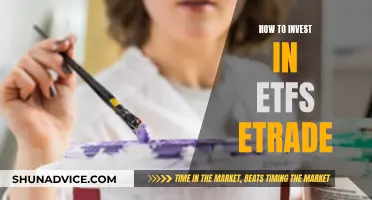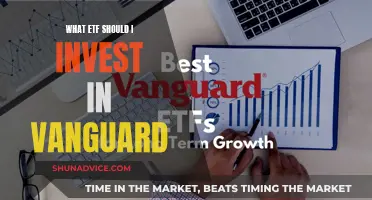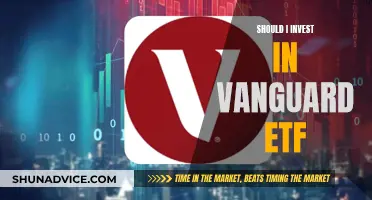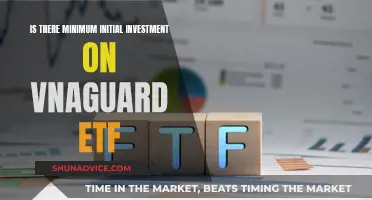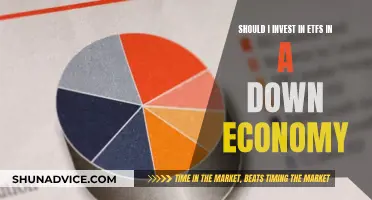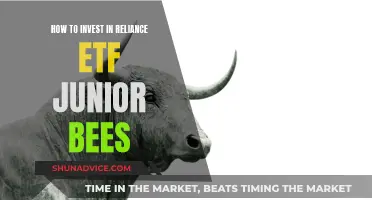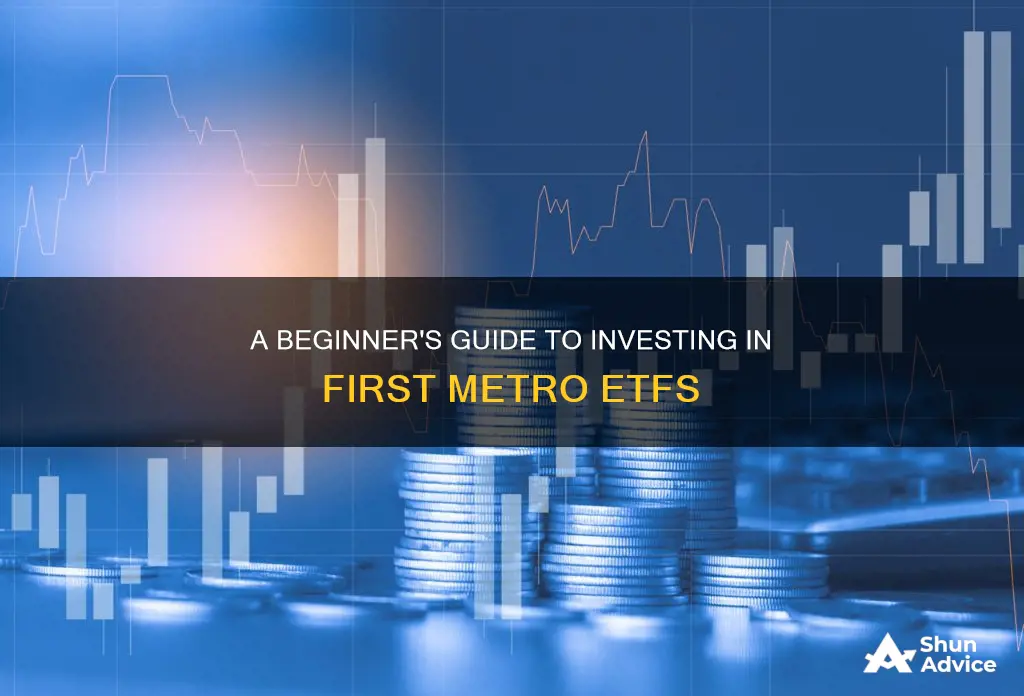
Exchange-Traded Funds (ETFs) are a great way to test the waters of stock market investing with less money down and little experience required. The First Metro Philippine Equity Exchange-Traded Fund (FMETF) is the first ETF in the Philippines, launched in 2013 by First Metro Investment Corporation (FMIC). FMETF aims to provide returns that reflect the performance of the Philippine Stock Exchange index. In this article, we will discuss how to invest in First Metro ETF, including the steps to get started, the benefits and risks of investing in ETFs, and the potential returns.
| Characteristics | Values |
|---|---|
| Name | First Metro Philippine Equity Exchange-Traded Fund (FMETF) |
| Launched | 2013 |
| Launched by | First Metro Investment Corporation (FMIC) |
| Fund Manager | First Metro Asset Management Inc (FAMI) |
| Authorized Participants | First Metro Securities Brokerage Corp (FMSBC) and IGC Securities |
| Underlying Securities | ABOITIZ EQUITY VENTURES, INC., PHILIPPINE LONG DISTANCE TELEPHONE COMPANY, GT CAPITAL HOLDINGS, INC, PUREGOLD PRICE CLUB, INC., ALLIANCE GLOBAL GROUP, INC, etc. |
| Aim | To provide returns that reflect the performance of the Philippine Stock Exchange index |
| Portfolio Reconstitution | Every 6 months |
| Trading | Traded like a stock in the Philippine Stock Exchange |
| Tracking | Tracks the performance of the PSEi |
| Website | www.firstmetroetf.com.ph |
| Contact Number | +63 (2) 8 891-2860 to 65 (Trunkline) |
What You'll Learn

Understand ETFs and their risks
Exchange-Traded Funds (ETFs) are a collection of investments that can be bought and sold in real-time. They are similar to Mutual Funds, which are also a collection of various types of investments, but Mutual Funds cannot be traded in real-time. ETFs typically base their investment strategy on mimicking certain indexes, industries, or sectors.
ETFs are considered less risky than individual stocks because they are diversified funds, and their investors benefit from very low fees. However, it's important to note that ETFs are not without risks. Here are some of the key risks associated with investing in ETFs:
Market Risk
The single biggest risk in ETFs is market risk. ETFs are only an investment vehicle, and if the market they track goes down, there is no way to mitigate the loss directly. Investors should set their capital in their portfolio to minimize exposure to this risk.
"Judge a Book by Its Cover" Risk
With thousands of ETFs available in the market, investors face many choices. The difference between the best-performing ETF and the worst-performing ETF in the same category can be vast. It's important to understand what the ETF holds and how it aligns with your investment goals.
Exotic-Exposure Risk
ETFs have opened up access to different areas of the market, such as commodities, currencies, and options strategies. However, easy access to these complex strategies doesn't mean they are always a good idea. Investors should do their homework and understand the underlying investments and potential risks.
Tax Risk
Tax efficiency is often promoted as an advantage of ETFs. However, not all ETFs are tax-efficient. The tax risk depends on how actively the ETF is managed, and not understanding the tax implications can result in a higher tax bill. International ETFs, for example, may not have the ability to do in-kind exchanges, creating capital gain issues.
Liquidity Risk
Liquidity is the ability to turn an investment into cash quickly without losing value. Low liquidity in an ETF can lead to higher trading costs or difficulty in buying or selling the ETF. Investors should consider the average bid/ask spreads, average trading volume, and whether the ETF is trading close to its net asset value when assessing liquidity.
Other Risks
- Trading Risk: The total cost of being an ETF portfolio owner, including direct trading costs, commissions, and sales charges.
- Methodology Risks: Even ETFs that track the same market can have different strategies and performances. Investors must understand the fund prospectus to know the potential risks of a particular investment strategy.
- Counterparty Risk: This risk is higher for Exchange-Traded Notes (ETNs), which are unsecured debt notes backed by a bank. If the bank goes out of business, investors may be stuck waiting for their money.
- Hot New Thing Risk: Be wary of new ETFs that promise exceptional returns with low risk. Study the marketing materials and underlying index strategy closely, and don't trust back-tested returns.
- Crowded Trade Risk: As money rushes into a particular ETF, the attractiveness of the underlying asset can diminish, impacting returns.
ETFs: Smart Investment Choices for Your Portfolio
You may want to see also

Research ETFs available in the Philippines
When researching ETFs available in the Philippines, it is important to first understand what an ETF is and how it works.
An Exchange-Traded Fund (ETF) is a collection of investments that can be bought and sold in real-time on an exchange. ETFs aim to replicate the performance of a specific index, such as the Philippine Stock Exchange Index (PSEi). This means that by investing in an ETF, you are essentially investing in a basket of stocks that make up that particular index.
In the Philippines, there is currently only one type of ETF available, the Equity Index-type. The First Metro Philippine Equity Exchange-Traded Fund (FMETF) was the first ETF launched in the country in 2013 and it is still the only ETF available to trade on the Philippine Stock Exchange (PSE). The fund is managed by First Metro Asset Management, Inc. (FAMI) and aims to provide returns that reflect the performance of the Philippine equities market by investing in stocks listed on the PSEi.
- SM Prime Holdings (SMPH)
- Bank of the Philippine Islands (BPI)
- International Container Terminal Services (ICT)
- Aboitiz Equity Ventures (AEV)
- Metropolitan Bank & Trust Company (MBT)
- Jollibee Foods Corp. (JFC)
In addition to FMETF, there are other ETFs that provide exposure to the Philippines market, such as the iShares MSCI Philippines ETF (EPHE) and the Invesco QQQ ETF (QQQ). These ETFs are not available for direct trading on the PSE but can be accessed through other means, such as feeder funds or online trading platforms.
When researching ETFs in the Philippines, it is important to consider factors such as the fund's holdings, performance, fees, and investment strategy. It is also crucial to understand the risks associated with ETF investing, such as market risks, trading risks, methodology risks, and tax risks.
Axis Technology ETF: A Smart Investment Strategy
You may want to see also

Choose a reputable broker
When it comes to investing in First Metro ETF, selecting a reputable broker is a crucial step. A good broker will provide you with the necessary tools and support to navigate the complexities of investing in exchange-traded funds (ETFs). Here are some factors to consider when choosing a broker:
- Fees and charges: Different brokers will charge varying fees for their services. It is important to understand the fee structure, including trading fees, commissions, and management fees. Look for a broker with competitive fees that won't eat into your investment returns.
- Trading platform usabilityCustomer support: As you navigate the world of investing, having a responsive and knowledgeable customer support team can be invaluable. Choose a broker that offers multiple channels of communication, such as phone, email, and live chat, with prompt response times.
- Broker's reputation and regulation: Reputable brokers will be properly licensed and regulated by relevant financial authorities. Ensure your broker is well-established and has a strong track record of providing reliable services. Check for customer reviews and feedback to gauge their reputation.
- Range of investment options: While you may be focused on First Metro ETF, consider a broker that offers a diverse range of investment products. This will provide you with more opportunities to diversify your portfolio and access different asset classes.
- Research and educational resources: A good broker will provide you with access to comprehensive market research, analysis, and educational resources. This can include market insights, trading tips, and investment strategy guides. Look for brokers that offer tools to help you make informed investment decisions.
Once you have considered these factors, you can select a broker that aligns with your investment goals and preferences. It is worth comparing multiple brokers to find the one that best suits your needs. Popular online brokers in the Philippines include COL Financial and BDO Securities (formerly BDO Nomura).
Automating Your Monthly ETF Investments: A Step-by-Step Guide
You may want to see also

Open a brokerage account
To open a brokerage account, you must first select a reputable stockbroker in the Philippines that offers ETF trading services. Some factors to consider when choosing a broker include fees, trading platform usability, customer support, and the broker's reputation. Popular online brokers in the Philippines include COL Financial and BDO Securities (formerly BDO Nomura).
Once you have chosen a broker, you can proceed to open an account. This typically involves providing identification and other necessary documents, such as a government-issued ID with a photo and signature, and proof of address. After completing the account opening process, you will need to deposit funds into your brokerage account. Most brokers offer various funding methods, such as bank transfers and credit/debit card payments.
It is worth noting that you can also open an account with First Metro Sec to buy and invest in the First Metro Exchange-Traded Fund (FMETF). This can be done by visiting their website and clicking on the "Open an account" button. In addition to the standard requirements mentioned above, opening an account with First Metro Sec also requires a Metrobank account number for existing Metrobank customers and a video call with one of their customer representatives for new customers.
Overall, opening a brokerage account is a straightforward process that typically involves choosing a reputable broker, providing the necessary documentation, and depositing funds into the account.
ETFs: An Introduction to Exchange-Traded Funds Investing
You may want to see also

Place your ETF trades
Placing your ETF trades
Once you have chosen a broker and opened an account, you can start placing your ETF trades. Log in to your brokerage account's trading platform and search for the ETF you want to invest in. In the case of First Metro Philippine Equity ETF, you can open an account with First Metro Sec to begin buying and investing in FMETF. Visit the First Metro Sec website and click "Open an account". You will need to provide a Metrobank account number (if you are an existing customer), a government-issued ID with a photo and signature, and proof of address.
You can also use any online trading platform accredited by the PSE, such as BPI Trade, COL Financial, or BDO Securities, to buy and trade FMETF.
After logging in to your chosen platform, you can search for the ETF you wish to invest in and place your trades accordingly. It is important to monitor your investments regularly and stay updated on market trends and news that may impact your holdings. You may also choose to turn on price alerts to better track the performance of your investments.
Additionally, it is recommended to review and adjust your investment strategy periodically as your goals and risk tolerance change. If necessary, make adjustments to your ETF portfolio to align with your financial objectives.
UK ETF Investment: A Beginner's Guide to Getting Started
You may want to see also


